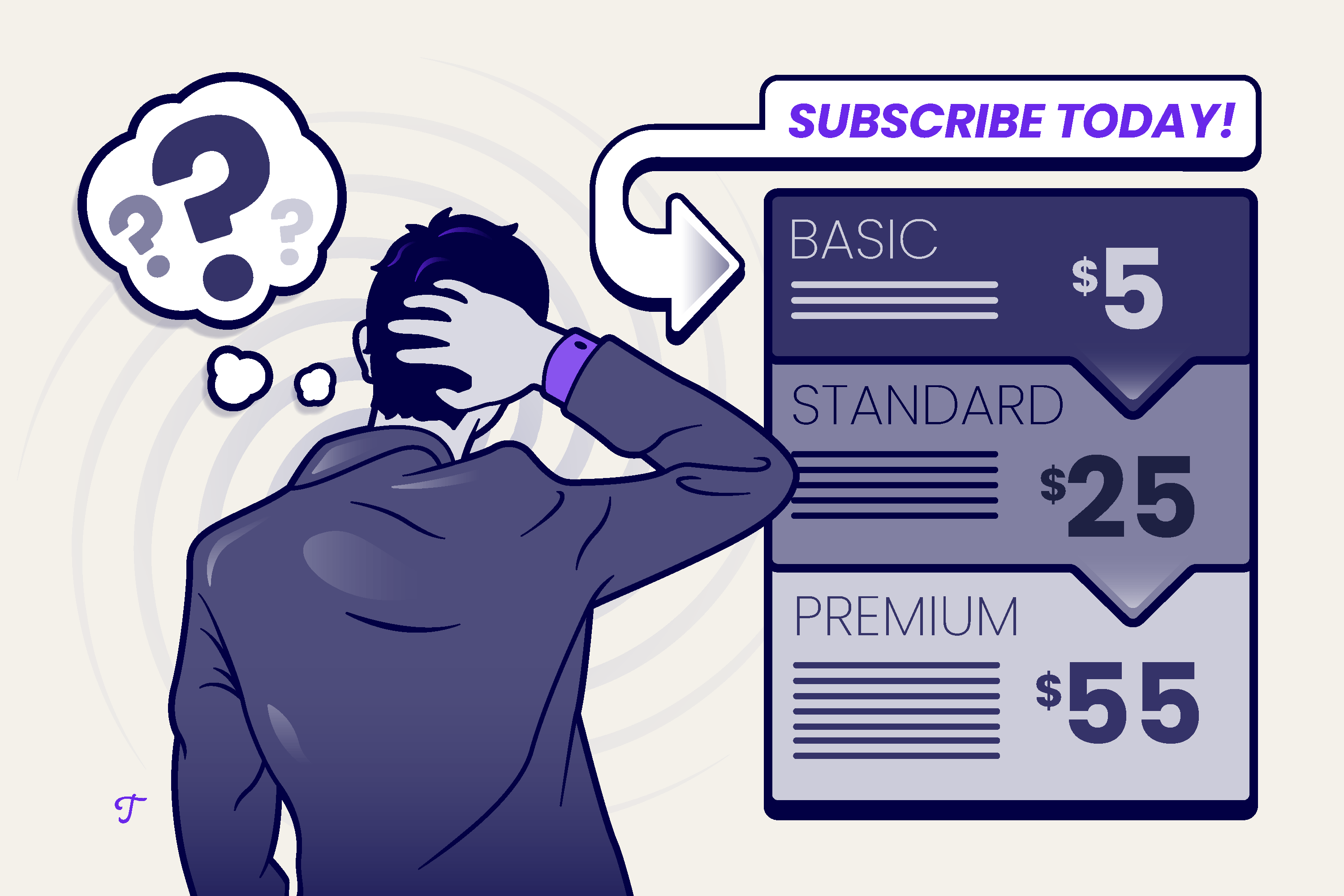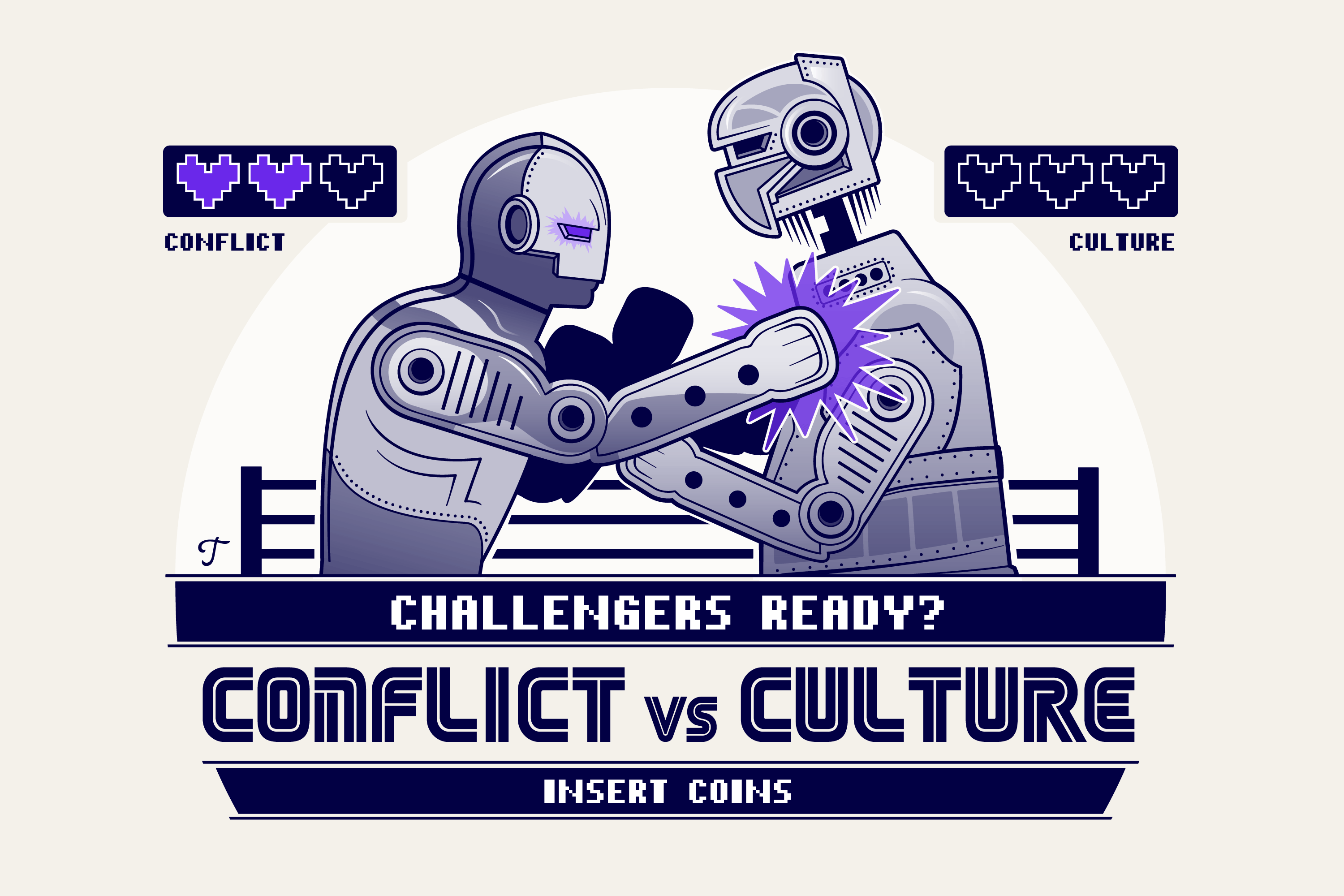Subscription models aren’t just for Netflix. Your SMB could also bank.
May 18, 2022
This could just be us, but “unidentified aerial phenomenon” just doesn’t hit like “UFOs.”
In this week’s edition:
- Weighing the pros and cons of a subscription pricing model.
- Building the best employee handbook for your team (with free templates!).
- Preventing conflict from killing your company culture.
- Tips for shaking off imposter syndrome.
HIT THAT SUBSCRIBE BUTTON
Is a subscription model right for your SMB?

Even if you’re not Netflix:
Subscription models — which enable customers to pay a recurring price for services or products — exist in every industry (we’re talking Spotify, BlueApron, and even Apple, just to name a few). And there’s a good reason for that: these businesses have grown 435% over the past nine years.
In the pros column:
Subscriptions enable businesses to drive a steady stream of income from recurring revenue. And this revenue is more predictable than one-time sales, which can help SMBs forecast future revenue patterns and predict their cash flow.
Plus, offering a subscription model also increases brand connection — the Subscription Economy Index (SEI) found that 64% of subscribers feel more connected to the brands they subscribe to rather than companies they only engage with during a one-time transaction.
But in the cons column:
Subscription models typically come with high customer churn rates — AKA more people quit their subscriptions during a specific time frame. So to maintain subscription profitability, you need to keep your customer acquisition cost (CAC) low. Same goes for your shipping and supplier costs if you ship products regularly.
And that makes it incredibly hard to implement a subscription model right now — especially with rising ad costs and supply chain disruptions facing direct-to-consumer brands.
But if a subscription model is right for you…
Here are the high-level steps you need to take to launch your new model:
- Identify your subscription offering and which model works best.
- Create a price strategy that entices customers and doesn't strain your cash flow.
HANDBOOK. BUT MAKE IT FASHION.
Building your employee handbook (plus, templates!)

Tired of fielding basic questions from your employees?
Then an employee handbook that’s both accessible and available online could be the answer to your time management problems.
Think of your employee handbook as your company playbook — it houses all of your must-knows and nice-to-knows in one place. From your mission and policies to who does what (and how to contact them), your employee handbook should be your team’s one-stop shop for whatever they need to know about your business.
And while you may already have a handbook…
We’re not talking about the four-inch-thick clunker of a book sitting in your office somewhere. With remote employment on the rise, it’s much more efficient to forego paper manuals in favor of a more accessible digital version.
Here’s how to get started updating (or creating) your employee handbook:
Step 1: Organize and update your policies and processes.
You’ve probably written down hundreds (if not thousands) of policies and processes that help you run your business. It’s time to gather them up and see if they match up with your current practices. Updating them could take some time, but it’s necessary.
And if you’ve still got your policies locked up in your brain, now’s the time to start documenting them. If you’re not sure how to begin crafting those, or if you need some help revamping your policies, then templates can help you get started.
Not sure how to design your business’s diversity and inclusion policy? There’s a template for that. Or maybe you need some help outlining your tech troubleshooting process. Guess what — we’ve got a template for that, too.
TALK IT OUT
Conflict could be killing your SMB culture. Time to fix it.

I thought conflict was an inevitable part of doing business.
Conflict is an unavoidable part of doing business — and just living life. But how you deal with that conflict as a business leader and entrepreneur can frame your company as a healthy space for ideas and discussion, or… a toxic landscape full of landmines.
What does healthy conflict look like?
In two words? Transparency and authenticity. Giving your employees the space and respect to be their authentic selves and ask hard questions (or present difficult arguments/perspectives) without the fear of retaliation, shame, or belittlement.
“Real transparency in the workplace is a verb, not a noun. It's an action, not a word,” says Rach Richardson, a senior success coach at Trainual. “It’s behaviors that are practiced consistently, which leads to culture; not the other way around.” Meaning, you want to put processes in place that consistently support a people-first culture. That starts with analyzing your hiring process, training your team on how to constructively provide feedback, and minding the language being used throughout the business.
I want to foster a culture of openness. Where do I start?
Here are a few tips:
- Invest in your careers page with photos and your employees’ stories of what it's really like to work at your company. Let your people speak to the people.
- Train your people to give feedback authentically and on a timely basis, so that conflict discussions are rooted on solid ground. (The BIQ method is a great resource for this.)
- Write a voice and style guide for your team. Invest in understanding what words are triggering to your people and define them.
FAKE IT TILL YOU MAKE IT
What to do when you just don’t feel good enough
What’s impostor syndrome?
It’s when someone doesn’t think highly of themselves (personally or professionally), to the point where they feel like an all-around phony. They believe they don’t have much to offer, and that their confidence and competence are just a big act.
.gif)
As you might imagine, a person with impostor syndrome can experience major anxiety — because while they want to feel good enough, they ultimately think their success is undeserved. It can even stunt actual professional growth, keeping the person from building and maintaining the confidence they need to succeed.
Have you experienced impostor syndrome?
It’s estimated that 70% of people experience at least one episode of this phenomenon in their lives. People experiencing impostor syndrome may:
- Agonize over the smallest mistakes or flaws in their work.
- Attribute success to luck or outside factors.
- Take constructive criticism to heart.
- Feel like they’ll be “found out” as a phony.
- Downplay their own expertise, even in skilled areas.
So, someone with impostor syndrome could be the smartest person in the room, but they feel like they’re just pretending to be smart and their success is a fluke.
How to keep pushing forward (for real):
Maybe you’ve experienced impostor syndrome a time or two, or it’s become somewhat of a constant in your life. If so, there are ways to get past feeling like you’re faking it and realizing you’re actually making it.
Here are some ways to get started:
- Don’t expect too much of yourself from the start. Remember, it usually takes time to build up confidence for something new. So do your best to tell those negative thoughts to take a hike. Because you don’t want them to damage your confidence and competence in the long run.
- Shift the narrative. Pay close attention to how you’re treating yourself. Don’t bully yourself by thinking things like, “I don’t deserve to be here,” or “I’m not smart enough for this.” Instead, make it a habit to catch those negative thoughts and change them to positive ones — like, “I’m confident. I’m getting better at this every day. I deserve to be here.” Over time, your positive thoughts will come more naturally.
TL;DR
This week’s highlight reel
- “You’re hired.” Need to fill the ranks? Your SMB isn’t alone. Good news: Indeed’s newly created Small Business Hiring Fund wants to help. They’ve got $50M earmarked for small businesses looking to find great hires through credits that can be used toward premium tools and Sponsored Job posts. Congrats — you’re now HR’s favorite person.
- Training Day. Oh, look. Google’s throwing wads of cash at businesses, too. The tech giant is offering every U.S. business up to 500 Google Career Certificate scholarships to level up their employees’ skills. That could amount to almost $100K worth of training. Feeling the love yet?
- Google, part deux. More news from the Googs. They’re planning to roll out “My Ad Center” this year, which’ll give users the ability to filter the advertisements they see on Google Search, Discover, and YouTube. Moral of the story: this’ll affect the ads targeted to users, so keep that in mind when crunching your analytics numbers.
- It’s the cheesiest. Kraft Heinz has partnered with ice cream maker Van Leeuwen to create an ice cream that looks and tastes just like one of your childhood favs: their iconic Macaroni & Cheese. The bright orange concoction has already hit the shelves at your local Walmart, so you know what you have to do.
IN CASE YOU MISSED IT...
Here’s what else is on The Manual’s mind
Been a busy bee? We got you. Catch up on the hottest SMB news today:
- Thinking of hiring an intern? See how this process differs from onboarding your typical new hire.
- Are you still charging an hourly rate? Learn how this can hurt your revenue in the long run.
- Want to be more innovative in your business? Natalie Painchaud, Director of Learning at Innosight, has some advice for you on the Organize Chaos podcast this Friday, May 20.




